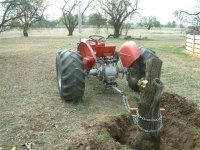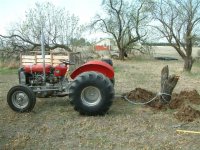Hill HIgh Guy
Member
I finally finished construction my house and can now finance a tractor and I'm ready to buy now. I've gone back and forth on what I need. It's 3 acres of former orchard with field grass now that I want to turn in to a decent lawn. The entire property is a pretty steep slope. I've waffled between a 1 series JD (KB BX) all the way up to an L. Sat on and drove everything in between including JD 2025 and Kubota B's. I asked the JD dealer to give me a quote on the new 20205r as I felt that I could spread the rears for stability and the tires were big enough to add weight by filling them. He doesn't have a 2025r in stock and sent me an email yesterday that he took his boss to my property and they agreed with my slope, a 1 series would be the right move as it would be more stable on the slope I have. Now I'm second guessing myself. Could it be that he would rather sell me a 1 series as he's got a bunch of them or is a smaller tractor truly more stable? I've read a ton on here that those little tractors can be tippy and it's harder to add spacers to the rear wheels. I had a Kubota dealer go out to my property and say a B2650 or even an "L" would be the best fit. This is craziness!!
Obviously I'm a newb and I don't want to buy the wrong tractor for 20K+. Thoughts?
Obviously I'm a newb and I don't want to buy the wrong tractor for 20K+. Thoughts?


